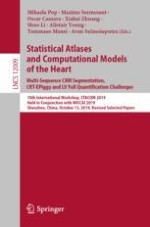2020 | OriginalPaper | Buchkapitel
Prediction of CRT Response on Personalized Computer Models
verfasst von : Svyatoslav Khamzin, Arsenii Dokuchaev, Olga Solovyova
Aktivieren Sie unsere intelligente Suche, um passende Fachinhalte oder Patente zu finden.
Wählen Sie Textabschnitte aus um mit Künstlicher Intelligenz passenden Patente zu finden. powered by
Markieren Sie Textabschnitte, um KI-gestützt weitere passende Inhalte zu finden. powered by
